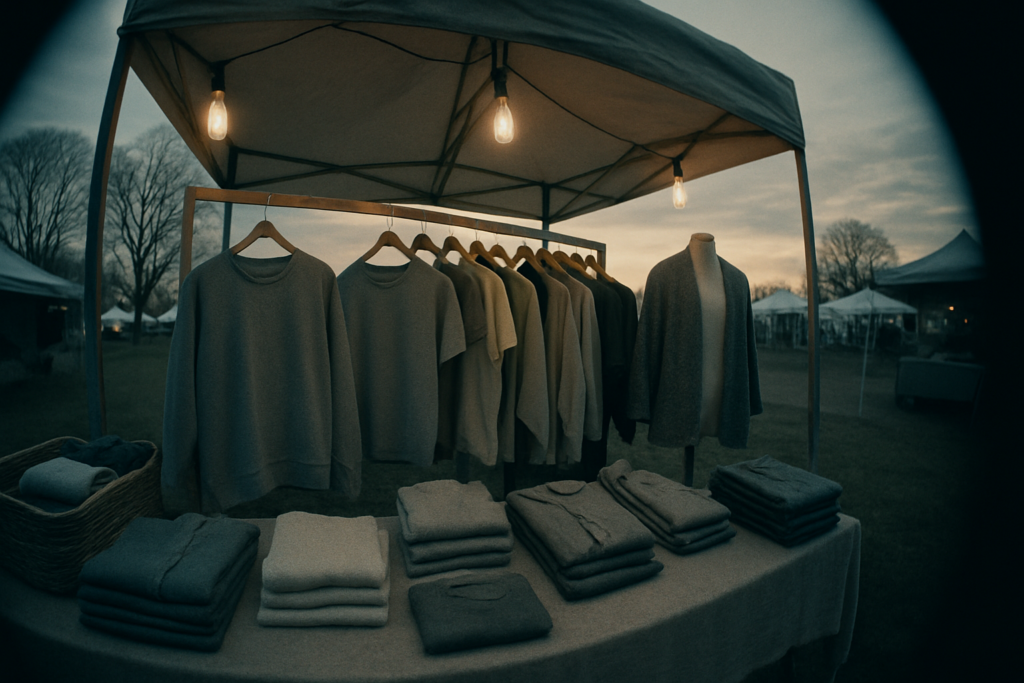Understanding Sustainable Fashion
Sustainable fashion prioritizes ethical production methods and eco-friendly materials. It seeks to minimize environmental impact while promoting fair labor practices.
What Is Sustainable Fashion?
Sustainable fashion involves creating apparel using methods that ensure minimal harm to the environment. Key practices include using organic materials, reducing water and chemical use, and incorporating recycling or upcycling processes.
For instance, brands might use organic cotton, which requires less water and fewer pesticides, or recycled polyester, made from post-consumer plastic bottles.
Why Is Sustainability Important in Fashion?
Sustainability in fashion addresses the industry’s significant environmental and social impacts. The fashion sector contributes to pollution through pesticides in cotton farming, water waste in dyeing processes, and textile waste in landfills.
Additionally, ensuring fair labor practices helps prevent exploitation in manufacturing countries. By supporting sustainable brands, consumers can reduce the industry’s footprint and promote ethical standards.
How to Identify Sustainable Fashion Brands
Recognizing sustainable fashion brands can be challenging but vital for promoting ethical standards.
Certifications and Labels to Look For
Identifying sustainable brands starts with certifications. Certifications provide evidence of a brand’s commitment to sustainability.
Look for labels like GOTS (Global Organic Textile Standard), Fair Trade Certified, and OEKO-TEX Standard 100. These certifications ensure eco-friendly materials, ethical production methods, and fair labor practices.
- GOTS Certified: Ensures organic materials and eco-friendly production.
- Fair Trade Certified: Guarantees fair wages and safe working conditions.
- OEKO-TEX Standard 100: Confirms the absence of harmful chemicals in textiles.
Transparency and Supply Chain Practices
Transparency in a brand’s supply chain is crucial. Brands should disclose their supply chain details, including sourcing, manufacturing processes, and labor conditions. Check if the brand publishes sustainability reports and adheres to standards like the Fashion Transparency Index.
- Sourcing Information: Indicates eco-friendly raw materials.
- Manufacturing Processes: Showcases efforts to reduce environmental impact.
- Labor Conditions: Ensures fair treatment of workers.
Transparency and certifications together create a clear picture of a brand’s sustainability, helping you make informed choices.
Criteria for Evaluating Sustainability

Identifying sustainable fashion brands involves examining specific criteria to ensure they meet environmental and ethical standards.
Environmental Impact
Assess a brand’s environmental impact by examining its use of resources and waste management. Check if the brand uses organic or renewable materials like organic cotton, bamboo, or recycled polyester.
Ensure the dyeing and finishing processes minimize water and chemical use. Look for brands that implement energy-efficient practices or renewable energy sources in their production processes.
Verify if they participate in circular economy initiatives like recycling programs or product take-back schemes.
Social and Ethical Considerations
Evaluate a brand’s social and ethical practices by reviewing labor conditions, fair wages, and community impact. Determine if the brand provides safe working environments and fair wages for all employees, especially in countries with lax labor laws.
Check for certifications like Fair Trade Certified or SA8000, which ensure ethical labor practices. Analyze the brand’s involvement in local communities, such as supporting artisans or engaging in social initiatives.
Consulting the brand’s transparency reports can reveal their commitment to social and ethical standards.
Examples of Sustainable Fashion Brands
Several brands actively promote sustainability through their commitment to ethical practices and eco-friendly materials.
Leading Brands Promoting Sustainability
- Patagonia: Patagonia champions environmental activism and transparency. The brand uses recycled materials, donates 1% of sales to environmental causes, and repairs products to extend life.
- Stella McCartney: Stella McCartney avoids leather or fur. Instead, the brand uses organic cotton, recycled materials, and eco-friendly dyes. They also work to reduce water use and carbon emissions.
- Eileen Fisher: Eileen Fisher focuses on simplicity and sustainability. The brand uses organic fibers, practices fair trade, and supports women artisans globally.
- Reformation: Reformation emphasizes reducing carbon footprint. The brand employs sustainable fabrics, recycles waste, and publishes environmental impact reports.
- Everlane: Everlane advocates for radical transparency. They share production costs, factory details, and labor conditions. The brand uses sustainable materials and avoids virgin plastics.
- Circular Fashion: Brands like H&M and Levi’s promote circular fashion through recycling programs. They encourage customers to return old garments for recycling, reducing waste.
- Eco-Friendly Fabrics: Tencel, made from sustainable wood pulp, is used by several brands now, including Zara and M&S. It’s recognized for its minimal environmental impact.
- Biofabrication: Companies like Bolt Threads create materials in labs, such as Mylo, derived from mushroom roots. This innovation aims to replace animal leather without environmental harm.
- Zero-Waste Design: Designers like Daniel Silverstein, founder of Zero Waste Daniel, create garments with no fabric waste. Patterns are designed to utilize every inch of fabric.
- Regenerative Agriculture: Patagonia and Eileen Fisher invest in regenerative agriculture, which focuses on restoring soil health. This method captures carbon and supports biodiversity.
These brands and innovations showcase the progress and potential in sustainable fashion.


 is the visionary founder of Eco Elegance Technique, a platform dedicated to blending sustainability with beauty and fashion. With a background in environmental science and fashion design, Lauranne has spent her career pioneering eco-friendly practices in both industries. Her work has influenced a shift towards ethical sourcing, waste reduction, and the use of organic materials. Passionate about education, she frequently speaks at conferences and works to inspire others to embrace a sustainable lifestyle.
is the visionary founder of Eco Elegance Technique, a platform dedicated to blending sustainability with beauty and fashion. With a background in environmental science and fashion design, Lauranne has spent her career pioneering eco-friendly practices in both industries. Her work has influenced a shift towards ethical sourcing, waste reduction, and the use of organic materials. Passionate about education, she frequently speaks at conferences and works to inspire others to embrace a sustainable lifestyle.
